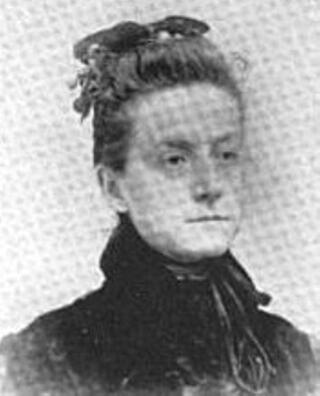From collection Candidates

Mary Bradford, a married (then widowed) teacher with four children, served in elected education positions in Colorado for more than twenty years. She was a lifelong Democrat. She lobbied on behalf of woman suffrage and when Colorado enacted full suffrage for its women in 1893, she announced as a candidate for state superintendent of public instruction. In the 1894 election she lost the position of superintendent to another woman, Anjanette J. Peavey, the Republican candidate. There were also two third-party candidates, Miss Alice M. Catlin, from the Populist party, and Mr. A. B. Copeland, candidate of the Prohibition party. This was the only office Bradford ran for while married. In 1901 her husband died. In September 1902 she was nominated by the Democrats as their candidate for a position on the State University's board of regents but lost. Later in 1902 she campaigned successfully to become Superintendent of Schools for Adams County, Colorado. Political maneuvering led to Bradford losing the nomination for this position in 1904 (Caldwell, 97), but in 1908 and 1910 she was nominated, and won, the office of Denver County school superintendent. In 1910 she also ran for, but did not win, the office of state superintendent of public instruction. Her opponent was Katherine M. Cook, the incumbent. Two years years later, in 1912, Bradford campaigned for, and won, the office of Colorado School Superintendent of Public Instruction. As the incumbent she won the office in 1914, 1916, and 1918. In 1920 she sought the office once more but lost the election to Katherine L. Craig. Bradford then defeated Craig for the office in the election of 1922, and then took the office a final time, in 1924. As state superintendent she provided leadership on a range of issues including rural school consolidation, standardization of instruction, "Americanization" of students and their families, funding methods for schools, and higher salaries for teachers.
While living in Colorado Springs, Bradford headed the local woman suffrage association. She later founded the Colorado Women's Democratic Club. In 1908 she was chosen as the voting delegate for Democratic presidential candidate, W. J. Bryan, and attended the Democratic National Convention held in Denver. She was the only voting female delegate.
Bradford was born in 1856 into a well-off Brooklyn, New York family. Her father was an attorney prominent in Brooklyn politics. At the age of nineteen she married Edward Bradford, a Navy lieutenant. They lived in Brooklyn for two years. Mary's biographer writes that Mary and her parents convinced her husband to leave the military and seek his fortune in the silver mining business. The young couple moved to Leadville, Colorado just before 1880. Mary began teaching soon after, and continued as an educator when the family moved to Colorado Springs in 1891 and, in 1893, to Denver. In addition to teaching school, she lectured. In 1894 the Colorado School Journal reported that she had accepted a position as a faculty member of the Colorado Summer School (sociology department). In Denver she was active as a club woman and Democratic party women's leader. Her election to the state superintendent's office brought her to national attention. In 1917 became president of the National Education Association. She was also a member of the World Federation of Education Association.
While living in Colorado Springs, Bradford headed the local woman suffrage association. She later founded the Colorado Women's Democratic Club. In 1908 she was chosen as the voting delegate for Democratic presidential candidate, W. J. Bryan, and attended the Democratic National Convention held in Denver. She was the only voting female delegate.
Bradford was born in 1856 into a well-off Brooklyn, New York family. Her father was an attorney prominent in Brooklyn politics. At the age of nineteen she married Edward Bradford, a Navy lieutenant. They lived in Brooklyn for two years. Mary's biographer writes that Mary and her parents convinced her husband to leave the military and seek his fortune in the silver mining business. The young couple moved to Leadville, Colorado just before 1880. Mary began teaching soon after, and continued as an educator when the family moved to Colorado Springs in 1891 and, in 1893, to Denver. In addition to teaching school, she lectured. In 1894 the Colorado School Journal reported that she had accepted a position as a faculty member of the Colorado Summer School (sociology department). In Denver she was active as a club woman and Democratic party women's leader. Her election to the state superintendent's office brought her to national attention. In 1917 became president of the National Education Association. She was also a member of the World Federation of Education Association.











